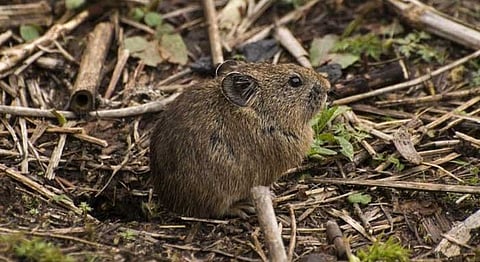
- HOMEGROWN WORLD
- #HGCREATORS
- #HGEXPLORE
- #HGVOICES
- #HGSHOP
- CAREERS
- ABOUT US
- CONTACT US

Curiosity may have killed the cat but it’s also been the driving force behind most of mankind’s greatest discoveries. Newton wanted to know why the apple fell the way it did, and discovered gravity. Marie Curie discovered two elements, radium and polonium, fuelled by the need to understand the world around her better and coined the term radioactive. Scientists have only expanded their horizons since then, making discoveries across spaces ranging from galaxies far beyond ours, and right here on Earth too. In October 2016, another scientist joined these ranks, and she happened to be closer to home than most. And while we love our electricity, gravity and evolution, her find was a whole lot cuter than most too.
Meet Nishma Dahal, the woman who traversed the Eastern Himalayan region, across Sikkim, Tawang in Arunachal Pradesh, Langtang National Park and Annapurna Conservation Area in Nepal, Spiti and Ladakh, all as part of her field research, which is when she discovered a new species. Following this intensive research, she conducted an in-depth study and finally, her work was approved and classified officially. Say hello to Sikkim’s newest, cutest inhabitant, the Sikkim Pika (officially known as the Ochotona Sikimaria), a little mammal found in the Himalayas.
The Pika is often referred to as the ‘canary in the coal mine’ by North American researchers, due to their vulnerability to increasing global temperatures. Normally found at high altitudes, in a cold environment, the Pika is an interesting mammal to observe, as climate change immediately affects them. “The Pika we discovered in the Sikkim region was previously always identified as a subspecies of Ochotona thibetana, commonly known as Moupin Pika. I’m a bit hesitant at calling it a discovery, because back in 1922, a naturalist had collected the first specimen and based on morphology, hinted at it being a new species. To be fair though, this pika was never studied in detail until our study was conducted,” she states in her email to us, rather modestly.
An explorer at heart, her interest in biology stemmed from childhood itself. Rather than go down the usual route of joining a company, research seemed like the more optimal option. Initially, the budding biologist didn’t understand any research papers she read, but under Dr. Uma Ramakrishnan at the National Centre for Biological Sciences (NCBS), Nishma made major headway.
The Government then offered Dr. Uma, and other scientists a grant to study Sikkim’s biodiversity from the Department of Biotechnology (DBT). “Considering I was from Sikkim, Dr. Uma asked me to think of a project under this grant. I hadn’t explored the forests of Sikkim surprisingly, so I set on my first ever exploratory field visit and loved it so much, that I decided right there and then, that when I did decide on a project, it would have to be one that allowed me to spend a lot of time doing field work,” she says.
A study within the Eastern Himalayan region was deemed important because of its rugged terrain and mountainous landscape. This tends to isolate several species, especially those that are limited by their dispersal. “Our study turned out to be a real eye opener. Eastern Himalaya, is a global biodiversity hotspot that we know so little about. The fact that we came across this new species of Pika through a collection of faecal pellets at the Kyongnosla Alpine Sanctuary on my first ever field visit, only confirms that notion,” says Nishma.
After collecting these pellets, she noticed that the pellets could not be identified with certainty. Since faeces are not a very good source of DNA, it was back to the field for Nishma, “Capturing Pikas in our traps, so we could obtain samples from them was probably the toughest bit of my field work. Once we recovered small ear tissue from the Pika, we released them. Fresh tissues are a good source of DNA, and helped us confirm that this species was distinct.”
For further approval, Nishma and the team (which consisted of Andrey A. Lissovsky, Zhenzhen Lin, Katherine Solari, Elizabeth A. Hadly, Xiangjiang Zhan, and Uma Ramakrishnan) even collaborated with researchers from China, Russia, and USA who helped them compare DNA samples and further confirm their find. “The most interesting thing about the Sikkim Pika is that genetically, it is closer to the Gansu and Plateau Pika, but morphologically, it is closest to the Moupin Pika. It’s just been evolving as a distinct unit for many generations,” she says.
As the mountains and the oceans continue to confound us with their undiscovered flora and fauna, it is a gentle reminder of the vast amount of discoveries we still haven’t stumbled across.
